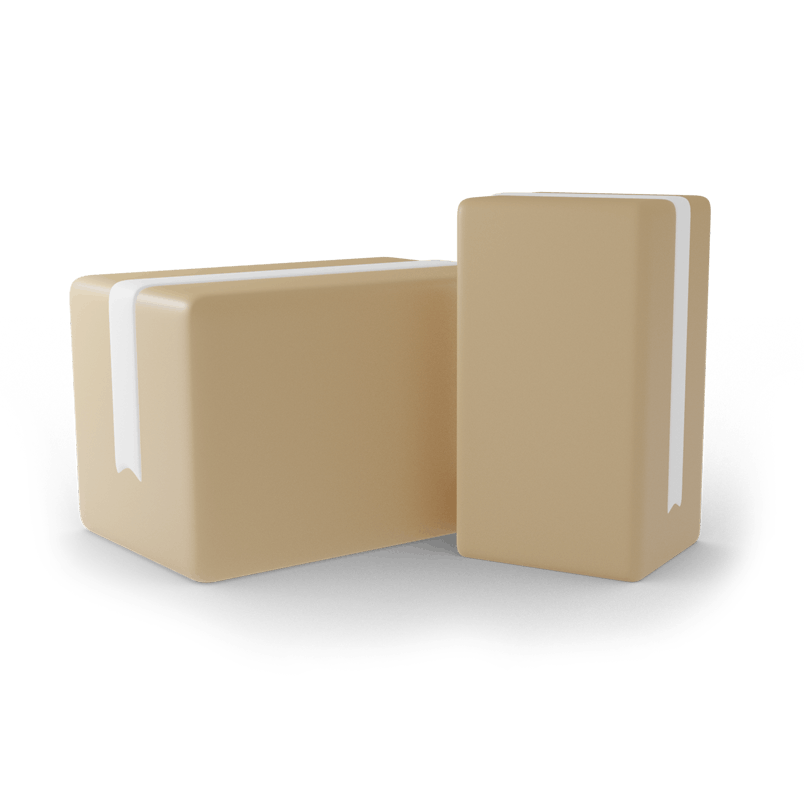
Cardboard waste collection
Cardboard waste is a common side effect of packaging and parcels. Thankfully, it’s relatively easy to recycle as it’s basically heavy-duty paper made from fibres previously processed from trees. This means your business can avoid sending lots of waste to landfill when you organise proper cardboard waste collection with Bins.co.uk.
Find out what to do with waste cardboard, how to dispose of it and everything else you need to know about cardboard waste recycling in this guide.
Why choose Bins.co.uk?
- We collect cardboard waste from anywhere in the UK*
- Get a quote online in minutes
- Free cardboard waste bins
- Free waste transfer notice
- Free duty of care certificates
- Flexible and affordable cardboard waste collection
- Carbon neutral
- Zero to landfill policy
* Mainland UK and places with acceptable access.
What is cardboard waste?
Cardboard waste refers to any type of heavy duty, thick sheets or multi-layered, stiff papers that have been used or discarded. It’s generally harder and more durable than paper, which makes it productive and useful for various purposes. It can cause environmental issues if thrown in landfill or incinerated.
Examples of waste cardboard can include:
• Corrugated cardboard
• Cardboard boxes
• Packaging materials
What happens to waste cardboard?
Luckily, cardboard is a recyclable material, so it shouldn’t go to landfill. Alongside the environmental benefits, it’s in the best interests of many businesses to recycle your waste cardboard to avoid spending lots of money on disposal.
The first stage is to arrange cardboard waste collection by a dedicated and reputable collection service, such as Bins.co.uk. We’ll collect your cardboard waste and deliver it to proper recycling facilities, many of which are paper mills.
We can accept most types of cardboard at this point, but some require following a special process if they’re coated or waxed.
The general process for cardboard waste recycling then follows these stages:
1. Our team separates the cardboard and distributes it as needed.
2. Once at the facility, waste cardboard is sorted according to their individual materials. These include boxboard, which are much thinner and usually used for cereal boxes or drinks, and corrugated cardboard – normally used for packaging and the transport of goods.
3. The cardboard is then shredded and broken down into small pieces.
4. It’s mixed with water and other chemicals to further break down the paper fibres.
5. The consequential substance is then pulped and blended with new pulp, to help the substance become solid.
6. It will then be filtered and de-inked before it’s finished for reuse.
Cardboard waste bins weight limits
The size of the commercial waste bin you arrange for collection affects how much weight you can put in it. You can fill cardboard waste bins with up to:
• 240 litres – 10kg
• 660 litres – 20kg
• 1100 litres – 35kg
Arrange for one or more of the same or different sized cardboard waste bins for collection, depending on how much cardboard waste your business has.
Cardboard waste facts
Every year in the UK we use 12.5 million tonnes of paper and cardboard – the same weight at 20 million polar bears. This accounts for one fifth of the total waste the UK produces but sadly around seven million tonnes end up in landfill.
One of the main uses of paper and cardboard is for packaging. According to UK government figures, 12.6 million tonnes of packaging waste were produced in 2020 in total, of which paper and cardboard waste made up the bulk of it at 5.5 million tonnes. However, only 65.6% of this paper and cardboard waste was recycled – less than metal and glass.
While we expect these numbers to improve, there’s still a lot of work to do. Considering in 2021 around 5.4 billion parcels were delivered in the UK – with expectations of growth to 7.5 to 8.5 billion by 2026 – that’s a lot more potential cardboard waste. It’s not just consumers either, business cardboard waste also contributes greatly, given the large number of parcels, packages, and other deliveries.
Why should we recycle cardboard?
Cardboard is one of the easiest and most efficient materials to recycle and its waste is completely biodegradable. It has an impressive reuse percentage, as cardboard packaging is often recycled up to five times. Therefore, most cardboard shouldn’t really end up going to landfill until it reaches the end of its life.
Unfortunately, lots of recyclable cardboard isn’t reused. For every tonne of cardboard recycled though, it saves around nine cubic yards of landfill space – about the size of 45 bathtubs. This helps cut air and water pollution, a common side effect that damages the local environment. It also means less energy is required to produce new cardboard and fewer trees need cutting down.
As a business, cardboard waste management has various benefits. It promotes a positive, green image for your company and helps you meet your ethical responsibilities. From a financial perspective, waste cardboard collection for recycling also saves you money on collection costs rather than sending to landfill.
Tips to reduce cardboard waste
As a business, you can promote sustainable packaging use and recycling through effective cardboard waste management with the following tips:
• Use recyclable materials – repurpose leftover boxes rather than getting rid of them. Turn them into storage solutions or use to package up goods you’re sending out. It also helps avoid buying unnecessary products, decreasing your costs.
• Encourage minimal packaging – efficiently decrease cardboard waste by packing small items in small boxes, which also reduces your delivery costs.
• Look for biodegradable options – seek packaging goods that will biodegrade. This way, a commercial composting facility can utilise them rather than going to landfill.
• Train your team – teach your staff so they know what to look for and avoid when packaging goods and dealing with any cardboard across your operations.
• Dispose of cardboard waste with Bins.co.uk – sort out cardboard waste recycling with our collection services to ensure none of your cardboard goes to landfill. Our cardboard waste collection is flexible with prices available online.
Arrange waste cardboard collection today
Contact us today and get a fast quote for waste cardboard collection tailored to your business needs. Simply choose the bin sizes, amount and frequency of collection you need to check the costs. Recycle your business cardboard waste easily with Bins.co.uk.
Discover other types of commercial waste

Dry mixed recycling
Get rid of recyclable plastics, metals, cardboard and more.Cardboard waste recycling: FAQs
No, you can recycle cardboard so it should not go in general waste. General waste refers to any business or household materials you throw out that you can’t recycle. This includes non-recyclable plastics, polythene and some food waste scraps.
No, you can recycle cardboard so it should not go in general waste. General waste refers to any business or household materials you throw out that you can’t recycle. This includes non-recyclable plastics, polythene and some food waste scraps.
You can recycle most types of cardboard. However, cardboard contaminated with food waste or that has a wax or shiny coating may not be recyclable. Sometimes corrugated cardboard and paperboard are tricker to recycle. Eventually cardboard will biodegrade and break down as well, at which point it may not be possible to recycle and reuse it.
You can recycle most types of cardboard. However, cardboard contaminated with food waste or that has a wax or shiny coating may not be recyclable. Sometimes corrugated cardboard and paperboard are tricker to recycle. Eventually cardboard will biodegrade and break down as well, at which point it may not be possible to recycle and reuse it.
You can’t recycle sticky tape so you should remove it from any cardboard waste that you send for recycling. Sometimes it can be ok to leave on bits of tape but to be safe and increase the ability of recycling, it’s advisable you remove as much of the tape as possible.
You can’t recycle sticky tape so you should remove it from any cardboard waste that you send for recycling. Sometimes it can be ok to leave on bits of tape but to be safe and increase the ability of recycling, it’s advisable you remove as much of the tape as possible.






